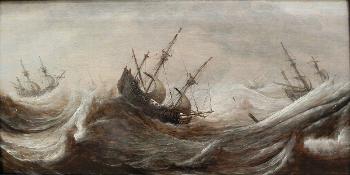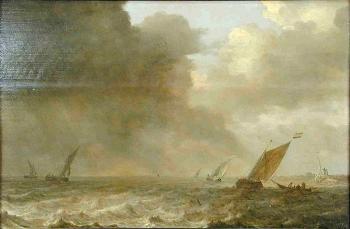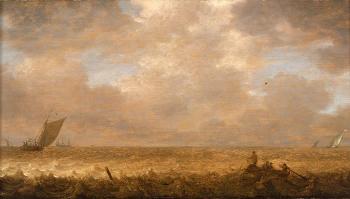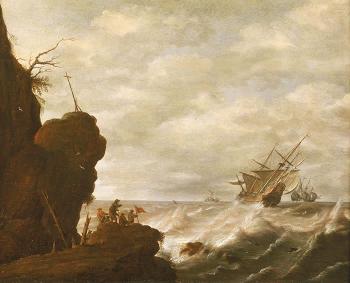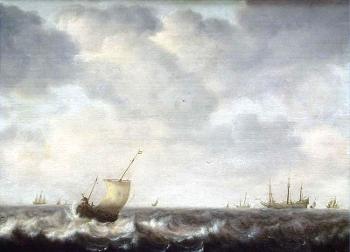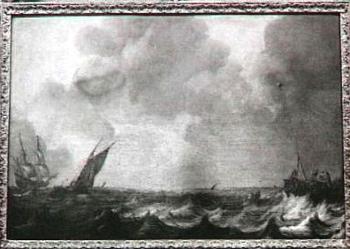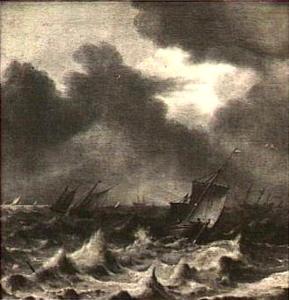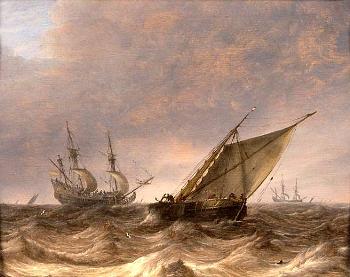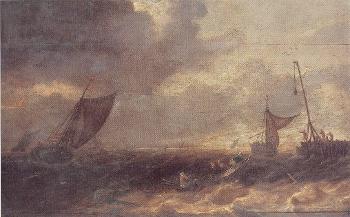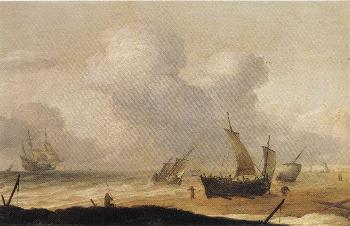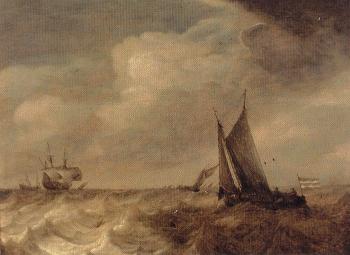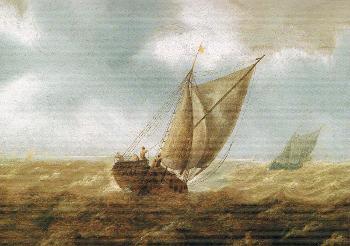Pieter Mulier I
(according to the RKD, The Hague; formerly known as by Abraham van Beyeren at the museum)
Stormy sea
Oil on panel : 33 X 33,1 cm
Traces of a signature bottom left on a piece of driftwood
Brussels, Royal Museum of Fine Arts
(black and white photograph)
This is a comparative item
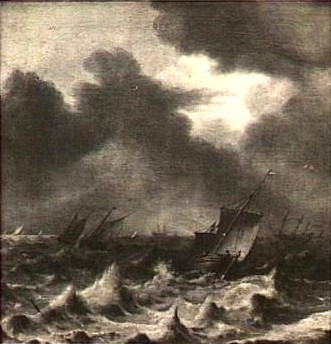
Painting for Sale
Mulier, Pieter I
"Dutch ships in stormy waters"
Comparative paintings
Click photos for more details

